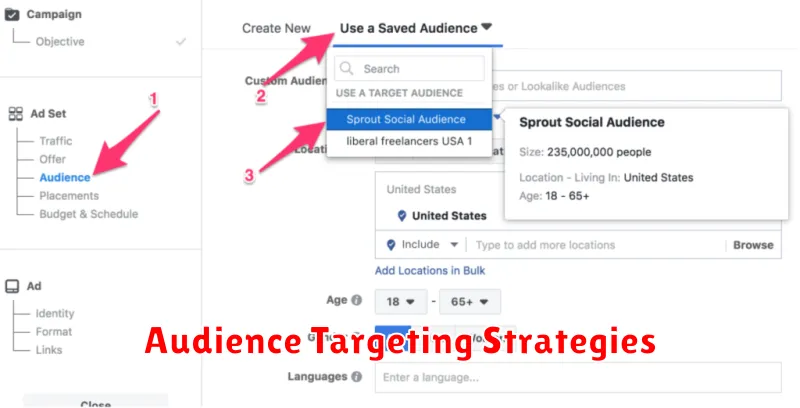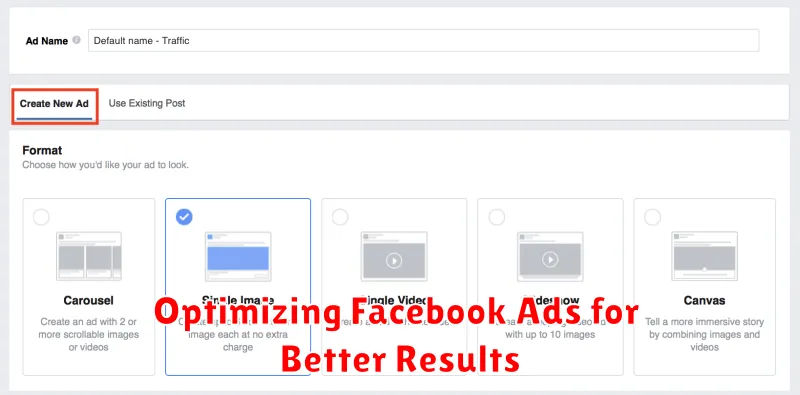Are you struggling to see a return on investment from your Facebook Ads? Do you feel like you’re throwing money away without seeing tangible results? You’re not alone. Many businesses struggle with Facebook Ads optimization, unsure of how to effectively target their audience, craft compelling ad copy, and choose the right bidding strategies. This article will provide a comprehensive guide to optimizing your Facebook Ads for better results, covering everything from setting clear objectives and understanding your target audience to A/B testing and analyzing key performance indicators (KPIs). Learn how to unlock the true potential of your Facebook Ads campaigns and achieve a higher return on ad spend (ROAS).
Optimizing Facebook Ads is crucial for achieving your marketing goals, whether it’s driving website traffic, generating leads, or boosting sales. This article will delve into the essential strategies and tactics you need to implement to maximize your Facebook Ads performance. From targeting the right audience and creating engaging ad creatives to mastering campaign budget optimization and utilizing Facebook Pixel data, you’ll gain the knowledge and tools to transform your Facebook Ads from a cost center into a powerful engine for growth. Let’s explore the world of Facebook Ads optimization and unlock the secrets to achieving better results.
Setting Clear Campaign Objectives
Before launching any Facebook ad campaign, it’s crucial to define clear and measurable objectives. This ensures your efforts are focused and contribute to your overall marketing goals. Choosing the right objective from the start allows Facebook’s algorithms to optimize your campaign delivery for the desired outcome.
Facebook offers a range of campaign objectives categorized by your marketing funnel stage:
- Awareness: Increase brand awareness and reach.
- Consideration: Drive traffic to your website, encourage engagement with your content, generate leads, and promote app installs.
- Conversion: Increase purchases, boost in-store visits, and promote catalog sales.
Selecting the appropriate objective impacts which metrics are tracked and how your budget is allocated. For example, if your goal is to generate leads, optimizing for the “Lead generation” objective will prioritize showing your ads to users most likely to submit their information.
Audience Targeting Strategies

Effective audience targeting is crucial for successful Facebook ad campaigns. Precise targeting ensures your ads reach the users most likely to engage with your content and convert into customers, maximizing your return on investment.
Facebook offers several powerful targeting options:
Core Audiences
Build audiences based on demographics (age, gender, location, language), interests (hobbies, activities, pages they like), and behaviors (purchase history, device usage).
Custom Audiences
Target existing customers by uploading customer lists (email addresses, phone numbers) or using website traffic data via the Facebook Pixel. This allows for retargeting and lookalike audience creation.
Lookalike Audiences
Expand your reach by creating audiences similar to your existing customers. Facebook identifies shared characteristics within your source audience to find new potential customers.
Designing Effective Ad Creatives
Visual appeal is paramount. Use high-quality images or videos that are relevant to your target audience and product. Ensure your visuals are eye-catching and communicate your message quickly and effectively.
Keep your message concise and focused. Users scroll quickly through their feeds, so grab their attention with a clear and compelling headline and ad copy. Highlight the key benefits of your product or service.
A strong call to action is essential. Tell users what you want them to do, whether it’s “Shop Now,” “Learn More,” or “Sign Up.” Make it easy for them to take the desired action.
Consider using different ad formats. Experiment with single image ads, carousel ads, video ads, or collection ads to determine which resonates best with your audience.
Regularly test and iterate your creatives. Analyze the performance of your ads and make adjustments based on the data. A/B testing different visuals, copy, and calls to action can significantly improve your results.
Using A/B Split Testing
A/B split testing, also known as split testing, is a crucial technique for optimizing Facebook Ads. It involves creating two or more versions of an ad (version A and version B) with variations in one specific element. This could be the ad creative, the headline, the call to action, or the target audience.
By running these variations simultaneously, you can measure which version performs better based on your chosen metric, such as click-through rate (CTR), conversion rate, or cost per conversion. This data-driven approach allows you to identify the most effective strategies and continually refine your ads for optimal performance.
For instance, you might test two different images while keeping all other ad elements consistent. Analyzing the results reveals which image resonates more effectively with your target audience, leading to higher engagement and better ROI.
Monitoring Performance Metrics
Regularly monitoring your Facebook Ads performance is crucial for optimization. Key metrics provide insights into campaign effectiveness and identify areas for improvement. Without consistent monitoring, your budget could be wasted on underperforming ads.
Some of the most important metrics to track include:
- Click-Through Rate (CTR): Measures how often people click your ad after seeing it. A higher CTR generally indicates a more relevant ad.
- Conversion Rate: Tracks the percentage of people who complete a desired action (e.g., purchase, sign-up) after clicking your ad. This metric directly reflects your campaign’s success in achieving its objectives.
- Cost Per Click (CPC): Represents the average amount you pay for each click on your ad. Monitoring CPC helps you manage your budget efficiently.
- Cost Per Acquisition (CPA): Indicates the average cost of acquiring a new customer or achieving a conversion. This is a vital metric for assessing the overall profitability of your campaigns.
- Return on Ad Spend (ROAS): Measures the revenue generated for every dollar spent on advertising. A higher ROAS signifies a more effective campaign.
By diligently tracking these metrics, you can identify trends, make data-driven adjustments, and ultimately maximize your Facebook Ads ROI.
Adjusting Budget and Bids
Budget allocation and bid strategies are crucial for optimizing Facebook ad campaigns. Regular adjustments are essential for maximizing your return on investment (ROI).
Start with a defined budget and choose a bidding strategy that aligns with your campaign objectives. For example, if your goal is conversions, consider using a “Lowest Cost” or “Target Cost” bid strategy. If your goal is brand awareness, a “Reach” or “Impression” based strategy might be more suitable.
Continuously monitor your campaign performance. If a campaign is underperforming, analyze the data to identify areas for improvement. This may involve increasing the budget for high-performing ad sets, decreasing the budget for underperforming ones, or adjusting the bid strategy altogether.
A/B testing different budget levels and bid strategies can provide valuable insights into what works best for your specific target audience and campaign objectives. Don’t be afraid to experiment and refine your approach based on the data you collect.

